






 |
 |
 |
 |
 |
 |
 |
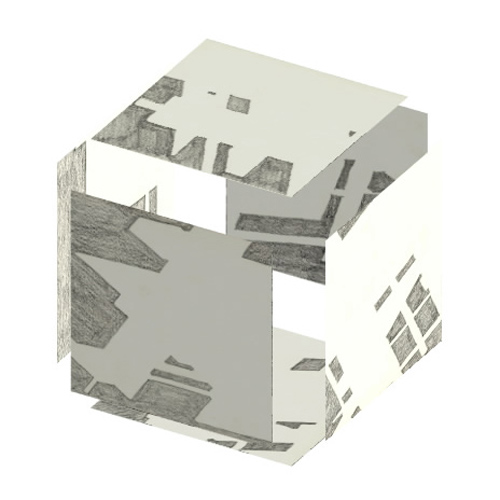 |
Step 1: I chose six drawings to occupy six sides of a cube. The drawings that I chose all relate by the process by which they were made. These drawings were interpretations of the shadows cast on the paper. the connection between the sunlight and the object becomes something entirely new: the shadow. |
|||||||
| I made several attempts to develop a process by which I would return to a three dimensional formal relationship. All of these methods began by mapping the drawings onto the surfaces of the cube by making the shaded regions manipulatable objects (faces) on the surface of the cube. | 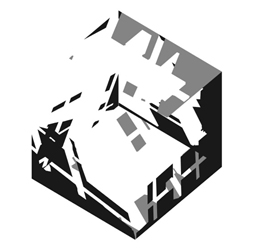 |
|||||||
 |
In my first attempt, through the use of the computer strictly, I used a complex mesh tool to connect the faces through the cube. This created a very interesting effect that I had little control over save the choice of faces to entangle with the mesh. The result of these choices was quite unexpected and interested me very much. There was however a serious lack of interdependence between each of the resulting forms. They collided, slid through one another, but avoided a greater complexity of relationship. The lack of an overriding formal relationship was magnified by the fact that all of these "webs" existed within the limits of the original cube. | |||||||
 |
||||||||
| In my second attempt, i tried to remedy the over-computerization of the model by thinking my way through the process. I first devised a strategy, and then tried to figure out how to make the computer do what i wanted it to do. the formal relationships I devised seemed foreign to the computer environment and seemed very forced and indifferent to the virtual space. on the positive side, I was able to break the plane of the original cube because that was part of my process. In the end I discovered what I probably already knew: In order to use a program to its fullest extent, one must first learn what the program can do, then find out how to make the design process develop based on these inherent possibilities. | 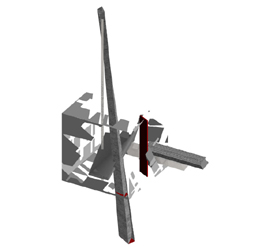 |
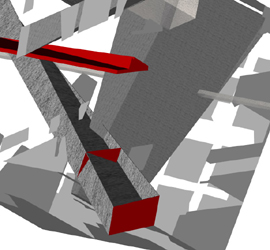 |
||||||
 |
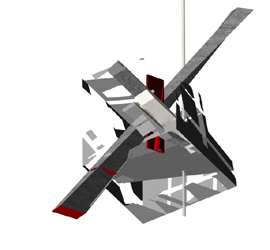 |
|||||||
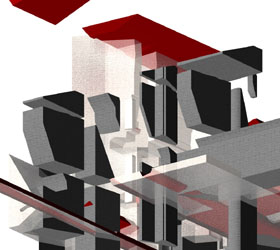 |
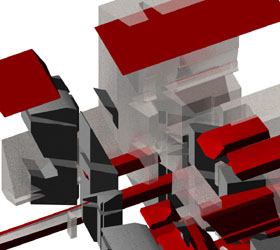 |
In my third and final attempt, I went back to the original drawings for inspiration for a process that better matched the abilities of the computer. The drawings themselves were the demonstration of the collision between an object and light(the shadow). Therefore the computer model would be the collision between two adjacent sides of the cube. Each of the faces were extruded the full depth of the cube. two of these adjacent extruded faces collided and where they came together a new 3 dimensional space-form was made through an operation the computer performed. each of the three adjacency studies came together and new overlapping, encasing, jagged, odd places are made. to break the box, i clicked and pulled the extruded faces outside the edge of the original container, thereby satisfying my need to use my own creativity to develop the plastic form and break the box. | ||||||
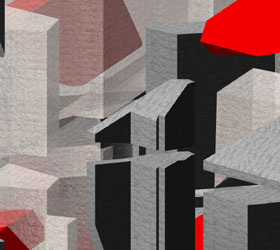 |
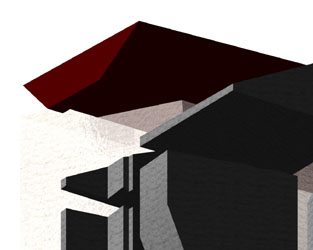 |
|||||||
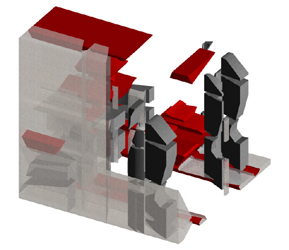 |
 |
|||||||